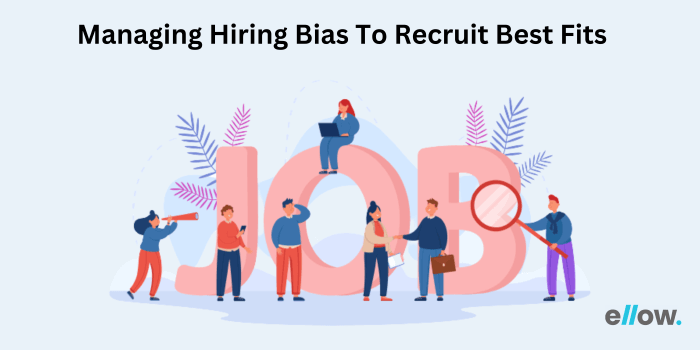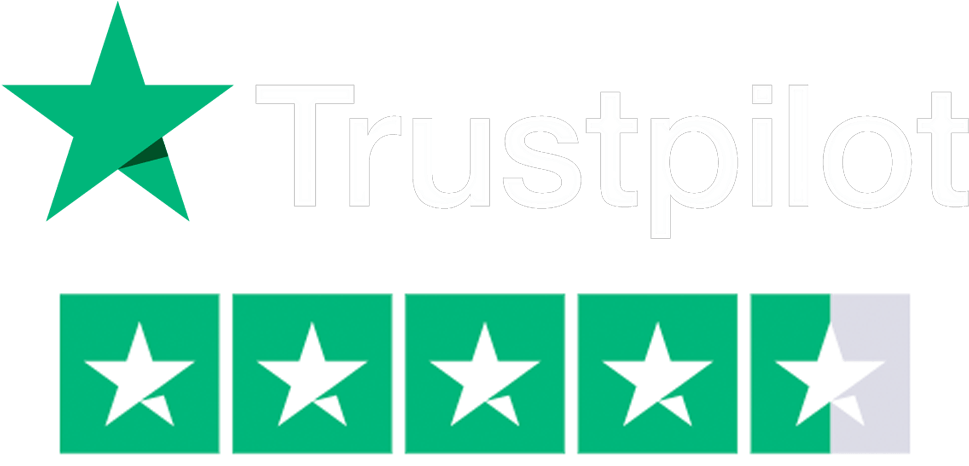Blog
How to Reduce Hiring Biases to Recruit the Best Fits
Going with just your gut feeling can cost you over INR 20 lakhs (about 25,000 USD). Often companies brag about their inclusive hiring policies, but when it comes to recruitment, subconscious hiring biases get in the way.
Think about some of the last interviews you took. Maybe the candidate’s gap year made them an unsuitable fit for you, or perhaps they being your college junior, you instantly developed an affinity with them.

Don’t go on a guilt trip. Even the best of us sometimes let our biases cloud our objectivity and make decisions based on what appears to be good on paper.
But for a business, it can turn into a nightmare with wasted resources and productivity.
Let’s avoid that by learning how to hire the best people without letting our biases control the strings.
Table of Contents
Common Types of Hiring Biases
Generally speaking, you can categorize biases into two types.
Conscious Bias: These are the biases people are aware of and believe without logical reasoning. For example– men can work better than women for a job.
Unconscious Bias: The biases that might be hard to identify and acknowledge are called unconscious or implicit biases. For example– a person who is good at communication is equally skilled at other aspects of the job profile.
The first step towards eliminating any bias is to acknowledge it. Using the following labels, you can spot your biases before making a hasty decision.
1. Similarity Attraction Bias
Humans look for familiarity to feel safe. This primitive desire leads one to favor those who might be from the same gender, race, ethnicity, or community.
2. Conformity Bias
Agreeing with the crowd can seem like a safe option. You won’t have to fight for your opinion and will easily please everyone. But while hiring, popular belief might not be the best one.
Conformity bias influences our decisions based on others’ opinions.
3. Beauty Bias
Pretty Privilege is real. Studies show that conventionally attractive people earn up to 15% more than their counterparts.
Assuming an attractive candidate is also the most qualified is the most prevalent bias across industries.
4. Halo Effect Bias
Just because someone graduated from an ivy league college doesn’t mean they excel at everything.
This assumption that one significant aspect of a candidate’s profile proves their worth in all domains is the halo effect bias.
5. Social Comparison Bias
When an interviewee finds a candidate that is even better than them, there might be chances that fear overpowers the decision-making.
The biases driven by social comparisons bring a less qualified candidate on board, resulting in poor company performance.
How do hiring biases affect Organisations?
Irrespective of the bias, it can have severe consequences for your organization.
1. Poor Returns
Hiring an employee isn’t a cheap affair. It consumes a lot of time, money, and effort. But if your biases result in a bad hire, it can take away the gains you expected from your human resources.
An undeserving candidate won’t be able to add anything to the company’s growth with his substandard quality of work.
2. Less Engaged Team
When one team member gets away with subpar performance, it can set an unsaid precedent in the team that they can too. Or others might have to spend extra time guiding the less competent ones.
Either way, it can result in a collective collapse of the team’s productivity.
3. Limited Diversity
If your biases stop you from hiring candidates of diverse backgrounds, you might be limiting new ideas to your team.
A diverse team brings more creativity, perspective, and culture to the organization, which is a must-have for a work environment.
Practical Ways to Reduce Hiring Biases
1. Add Structure to Interviews
Interviews aren’t easy, even if you are on the other side taking one.
Often we hop on the interview call with the intention of just winging it. But lack of preparation can result in a line of questioning that triggers our biases.
That’s why it’s crucial to standardize your interviews to provide a fair play field to all candidates. If you ask the candidates relevant and the same questions, it will give you excellent points for evaluation to pick the best one from the lot.
Go through the job profile and scribble down the questions that will help you find the perfect fit.
Also, avoid asking personal questions in the interview that aren’t related to the work or the role’s requirements.
2. Learn and Unlearn
The secret to unbiased hiring isn’t just learning new tips but unlearning unconscious behavioral patterns.
And it’s easier said than done.
That’s why enrolling your team in a training program is a great move to eliminate the chances of a biased hire. You and your team members who actively take interviews can reach out to the HR team for a thorough lesson in mindful hiring.
But a handful of sessions isn’t going to help if the teachings are not practiced. So, keep an open eye and look for any potential biases your team might have. It’s essential to keep such behaviors in check and correct them at the right time.
3. Describe the Job, Not the People
Your job description is the star of your hiring process. To really use it to its full potential, keep it inclusive so that all probable candidates can apply.
Too much unnecessary description can limit your candidate pool. Avoid gendered terms like ‘ninja’ or ‘rockstar’ while describing the ideal candidate. You should also stay away from detailing the age, race, or other personal preferences of the applicable candidates.
Decide the package and benefits you wish to offer the candidate before you start interviewing.
Some interviewers even prefer removing personal details from the resume so that they can judge the candidates solely on their qualifications.
4. Use Technology to Screen Candidates
Technology doesn’t discriminate.
That’s why you can incorporate it into the initial vetting process to get a fair pool of candidates.
Ellow stands out here as it uses machines with humans in its four-step screening process. It filters the candidates based on their resume qualifications and technical caliber, taking a significant load off your shoulder.
5. Test Candidates With a Sample Work
Each candidate’s resume will have a lot of say.
To test their mettle, give a small test to all candidates and ask them for the solutions. Such practical screening processes provide an instant glimpse of their potential.
However, note that the assessments should be the same for everyone and be decided in advance. Also, keep it concise, which tests their problem-solving skills.
6. Bring More People to the Panel
Your interview board shouldn’t comprise just one person. It can easily let biases slip through.
Instead, include at least 3 people in the interview process who can judge the candidate objectively. Keep the panel diverse to allow free speaking and new perspectives.
Collaboration is highly critical among the panelists so that the interview questions are optimized to avoid repetition. In the end, all the interviewers can brainstorm the best candidate by sharing their honest opinion.
7. Make Data the Center of Your Hiring Process
You can’t make objective hiring decisions without a data-driven approach. Otherwise, you are just running on intuition and assumptions.
That’s why you should back your every conclusion with proper analytics and reports.
Ask the HR team for the metrics like retention rate, offer-to-joining, and application rate for your job description. Look for any unhealthy patterns in the above parameters and try to understand their reason.
Conduct internal audits to evaluate your team’s performance and align them with common goals.
8. Outsource Your Hiring Grind
Another popular method of collecting diverse applications is outsourcing the hiring process, at least the candidate sourcing and screening.
You can brief a reliable third-party vendor with the job description and requirements to share suitable candidate profiles.
It’s a foolproof way of not letting your biases seep into the hiring process.
Leverage Candidate Feedback For an Unbiased Hiring
We are all humans, and no matter how much we try, we can’t eliminate biases completely.
But it shouldn’t stop one from trying. And the surefire in the right direction is asking candidates for their feedback.
Share a quick feedback form with all candidates, irrespective of whether they were selected or not. Ask them about their experience with the hiring process. See if they found the whole recruitment process to be unbiased and fair.
Build your improvement strategy on these feedbacks and enjoy an unbiased, productive hiring process that hands you the best candidate.
Frequently Asked Questions
Unconscious bias during interviews is quite common, but training your interviewers and following a structured interview process can avoid it.
Blind recruitment is a type of hiring process where identifying information such as the candidate’s name, age, gender, ethnicity, educational institution, and address is removed. It aims to reduce bias and increase diversity in the workforce.
Measuring bias in the hiring process can be difficult, but it can be done with the combination of data analysis, blind hiring assessments, candidate surveys, and implicit bias tests.





